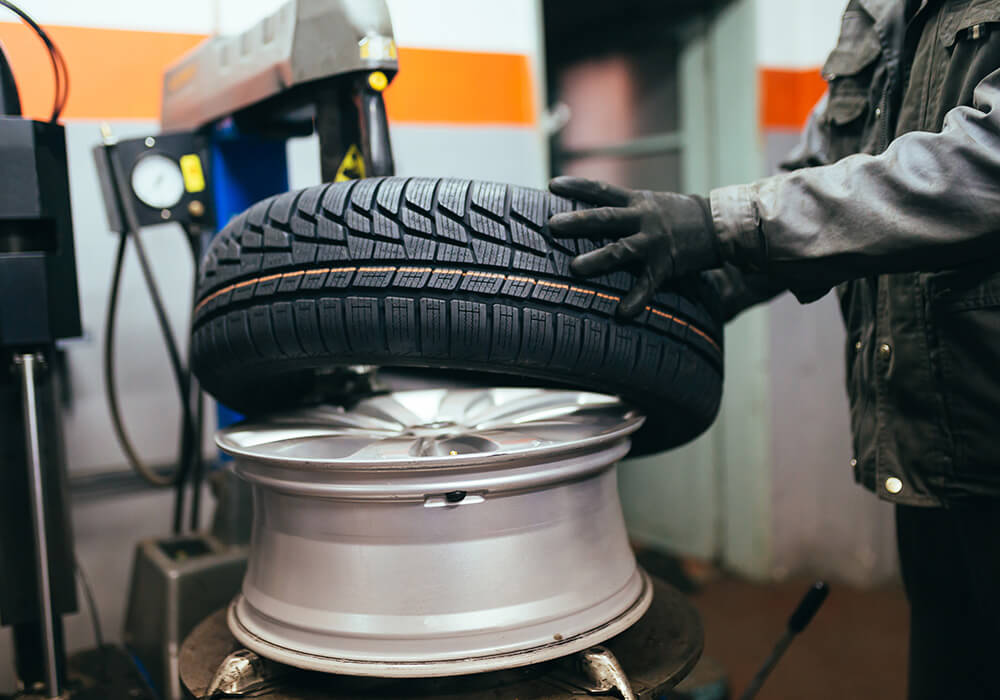Get Road-Ready with Expert GMC Tires Service at Morris Tires
Get Road-Ready with Expert GMC Tires Service at Morris Tires
Blog Article
Tire Solution: The Impact of Climate Condition
When it comes to ensuring optimum efficiency and security on the roadway, comprehending the impact of climate problems on tire service is crucial. GMC Tire Service. In this conversation, we will explore the intricate partnership between weather condition problems and tire service, losing light on the value of weather-specific tire upkeep practices and factors to consider.
Heat and Tire Efficiency
When exposed to heats, tires experience changes in efficiency that can substantially impact vehicle safety and security and handling. The heat created from extended driving or heat conditions causes the tire rubber to soften, leading to lowered step life and increased wear. As the rubber ends up being softer, the tire's grasp on the road reduces, influencing braking distances and general grip. In extreme cases, extreme warm can also create tire blowouts, posturing a serious security danger to the automobile and its passengers.

Winter Impacts
Cold weather conditions can have a substantial effect on tire performance and safety and security. As temperature levels decrease, tire rubber can solidify, resulting in decreased traction on icy or snow-covered roads. In cool weather condition, tires might additionally lose air stress much more quickly, which can influence dealing with and fuel efficiency. In addition, cool temperature levels can cause tire sidewalls to stiffen, increasing the danger of damage from holes or other road dangers.
To alleviate the impacts of winter on tires, it is crucial to on a regular basis inspect tire stress and inflate them to the supplier's suggested degrees. Utilizing winter season or all-season tires created for winter conditions can additionally boost traction and grip on icy or snowy roads. Appropriate tire maintenance, consisting of normal evaluations for wear and damages, comes to be a lot more important throughout chillier months to make sure optimal performance and safety and security.
Rainy Issues Influence
Tires with damaged footsteps are much more susceptible to hydroplaning, where a layer of water develops up in between the tire and the roadway surface, leading to loss of grip. To fight this, drivers should consistently evaluate their tires for sufficient walk deepness and think about spending in tires particularly designed for damp conditions.
Furthermore, wet climate can additionally lower visibility, making it testing for chauffeurs to see the roadway ahead clearly (GMC Tire Service). In such problems, it is important to change driving rates appropriately and keep a risk-free following range to enable that site abrupt stops. Correctly filled with air tires can also assist in maintaining control on damp roadways by supplying far better handling and grasp
Snow and Tire Safety
Snow-covered roads pose distinct obstacles for chauffeurs, highlighting the relevance of proper read more tire option and upkeep. When driving in snowy problems, having the appropriate tires can make a considerable distinction in safety and performance. Winter season tires are created with unique rubber compounds and walk patterns to offer better traction on snow and ice compared to all-season tires. The deeper treads and sipes of winter months tires help grasp the roadway better, decreasing the risk of sliding and sliding.

It is crucial to adhere to manufacturer instructions when using and installing tire chains to stop damage to the tires and car. By selecting the best tires, keeping correct rising cost of living, and considering added traction help like tire chains, vehicle drivers can boost their security when browsing snow-covered roadways.
Weather-Related Tire Upkeep
When faced with numerous weather condition conditions, correct tire upkeep comes to be an important aspect of vehicle safety and performance. Weather-related tire upkeep incorporates a series of methods focused on ensuring optimal tire function and longevity in different weather condition situations. One key aspect of weather-related tire upkeep is tire pressure law. Varying temperatures can create tire stress to differ, influencing grip and fuel performance. Regularly examining and adjusting tire stress according to producer suggestions is essential for risk-free driving in transforming weather. Furthermore, tire walk deepness plays a considerable duty in taking care of various climate elements. Tires with sufficient step deepness give much better hold on damp or icy roads, minimizing the risk of skidding or hydroplaning. Examining tire walk regularly and changing tires when walk wear reaches a certain deepness is essential for preserving traction and stability in adverse weather. By prioritizing weather-related tire upkeep, chauffeurs can improve safety, enhance lorry performance, and prolong the lifespan of their tires.
Verdict
In final thought, climate conditions have a substantial impact on tire efficiency and safety. From warm influencing tire stress and use to cool weather condition minimizing grip, it is important to take into consideration the weather condition when preserving and using tires.
In this discussion, we will certainly discover the detailed connection between climate conditions and tire service, losing light on the importance of weather-specific tire maintenance methods and considerations.

Report this page